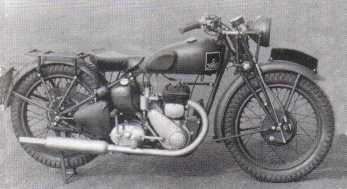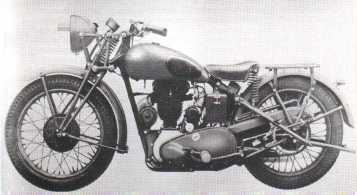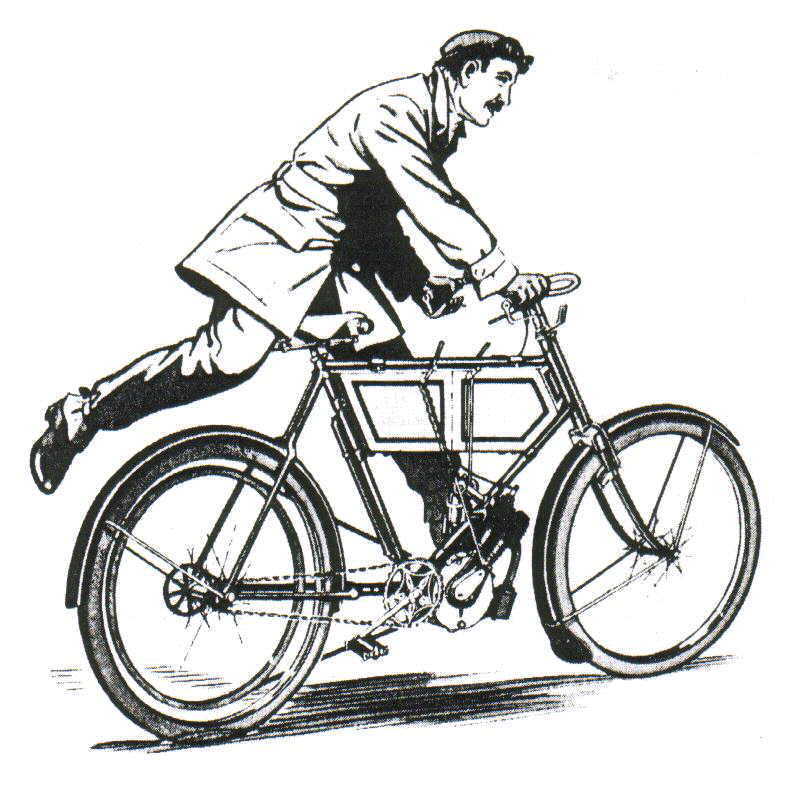The Pre-1941 Triumph Motor Cycle Pages
|
From Peter Cornelius - Triumph Specialist for the VMCC - of Britain.

1938 Model 3SW |

Model 3HW |
|
The Army and Royal Flying Corps (pre-RAF) first seriously used
motor cycles in 1914 and Triumph's Models H became the backbone of
such two-wheeled mechanised transport.
Following The Great War the military continued with such vehicles,
and in the following years Triumph Models P, NP, N de Luxe and ND
were purchased under War Department contracts. Notice that these were
all steady reliable side-valve machines.
With the coming of the Second World War such current Triumph
machines were militarised and the Model 3S became the Model 3SW (War
Department). A few Models 5SW were also ordered.
With roads somewhat better in 1939 than they had been in 1914 (!)
a slightly faster over-head model was also ordered in lesser numbers,
and the Model 3H became the Model 3HW.
A new lightweight 350cc over-head valve twin-cylinder model was developed
and is believed to have been ready for production when the Triumph
Works was destroyed near the end of 1940. This was to have been the
Model 3TW.
Production in restricted premises continued following the loss of
the Works, concentrating on those models for which machinery was able
to be rescued from the remains of the Works. These were the 3SW and
3HW models.
|
Brief Specifications and Variations
Model 3SW. 349cc s/v. 70mm bore X 89mm stroke. 12 bhp at 4,800 rpm.
Model 5SW. 493cc s/v. 84mm bore X 89mm stroke. 23 bhp at 5,000 rpm.
Model 3HW. 343cc ohv. 70mm bore X 89mm stroke. 17 bhp at 5,200 rpm.
Militarisation of a machine designed for the civilian market mainly
meant not fitting such 'nicities' as tank instrument panels, and
keeping the cost at the absolute minimum. Such basic tanks had
already been manufactured for the 'Export' models.
I do not currently have enough details from surviving machines to be able to
give an approximate figure for the production of individual models.
Codes indicating month and year of assembly had been discontinued, and
while the 'model year' was indicated with an engine number that does
not indicate when it was assembled, for 1940 'models', for example,
were starting to be assembled from around August or September 1939.
Therefore at this time the approximate figures which I have need
to be 'refined' before I can release any figures.
Prior to the loss of the Works the 1940 production had included
5,440 Models 3SW and 1,488 Models 5SW for the home market, with a
further 518 Models 5SW for export. Some of these may well have been still awaiting
despatch when the bomb landed on the Works.
I currently have knowledge of ex-Military Models surviving in
Britain, Canada, Greece, Holland, Poland and Indonesia.
|

Jump Back to
the Beginning
|
 Return to the
Return to the
Post-Vintage Index
|
| 


